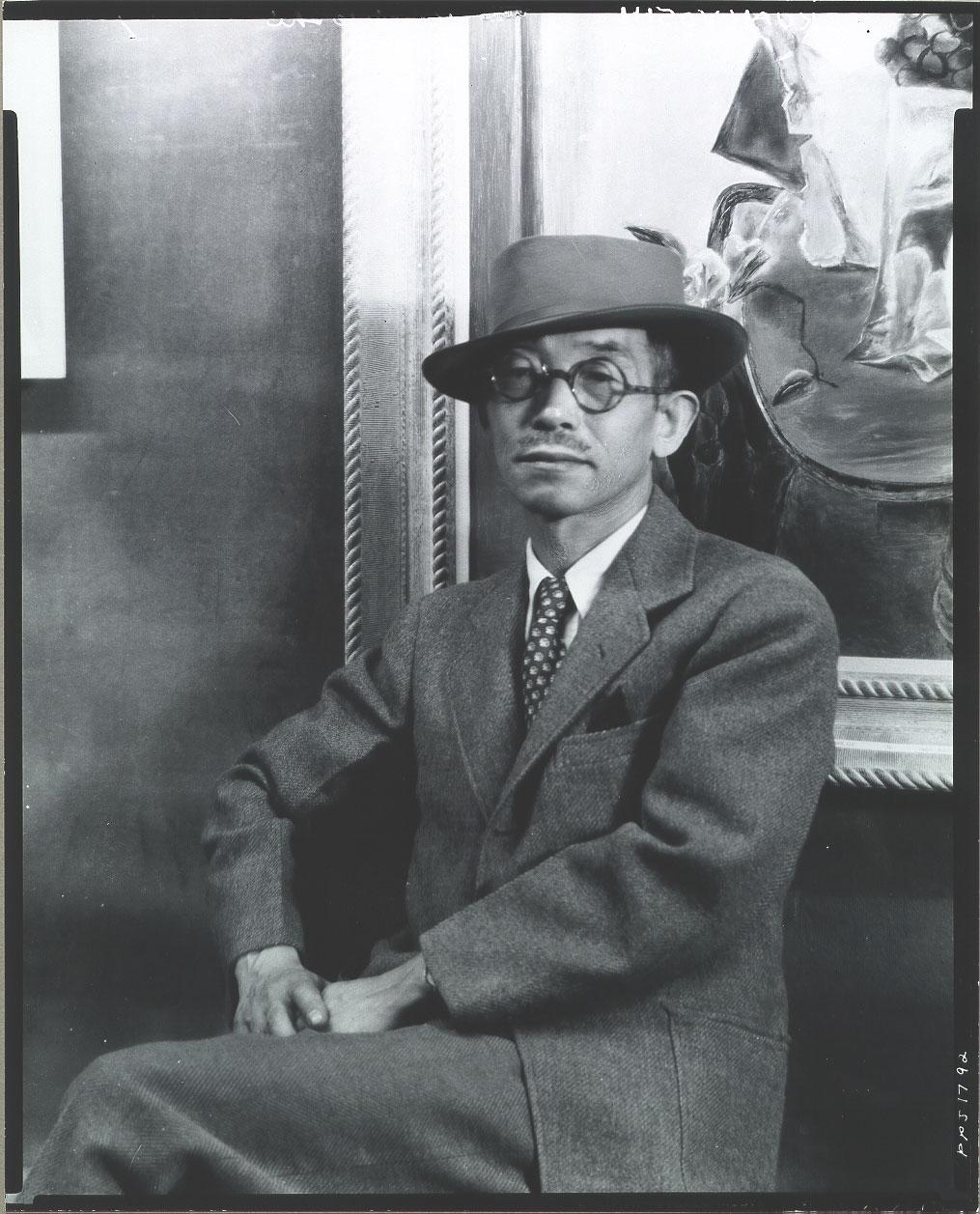Born in Japan, Yasuo Kuniyoshi (1889–1953) was among the most important figures in American modernism. He rose to prominence in New York in the 1920s, exhibiting with such notable artists as Stuart Davis, Edward Hopper, Reginald Marsh, and Georgia O’Keeffe. He developed an idiosyncratic painting style with subtle color harmonies and simplified shapes, oddly proportioned figures and eccentric handling of space and scale. With influences from American folk art, Japanese subjects and design, as well as European modernism, Kuniyoshi created a distinctive expression that won him critical acclaim. He exhibited in the most prestigious exhibitions, won important awards, and was honored with the first retrospective exhibition of work by a living artist at the Whitney Museum in 1948.
Kuniyoshi’s success, however, was shadowed by his immigrant status. Being Japanese in America brought difficulties, and he turned to his art to navigate a private world of uncertainty. His early career unfolded during a wave of anti-immigrant fervor in the 1920s. In 1941, in the wake of the attack on Pearl Harbor, the US government declared him to be an “enemy alien.” Kuniyoshi remained steadfast in his loyalty to the United States and put his talents to work as a poster artist to support the war effort. His late, brightly colored paintings paradoxically convey a cool ambivalence and disillusionment. Kuniyoshi’s journey from Okayama in 1906 to his success in New York reveals a story of aspirations, disappointments, and a striving for clarity, meaning, and a place in the American world.















